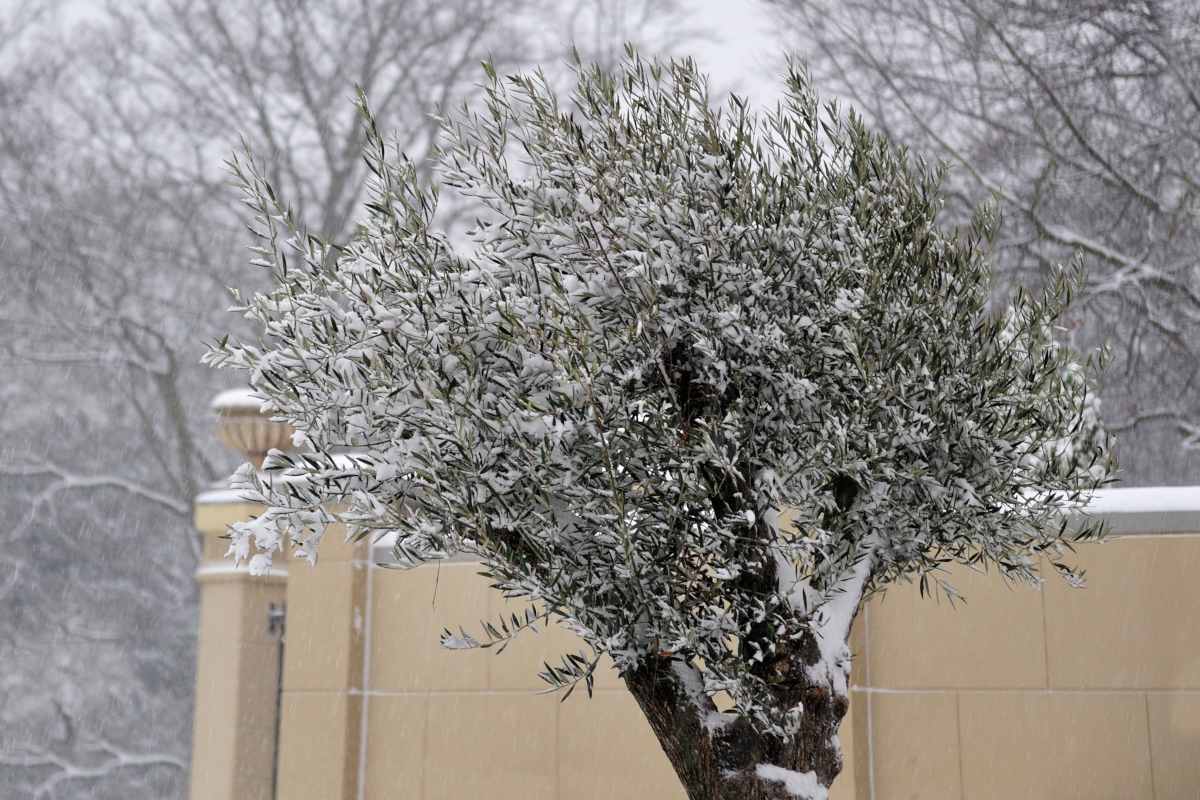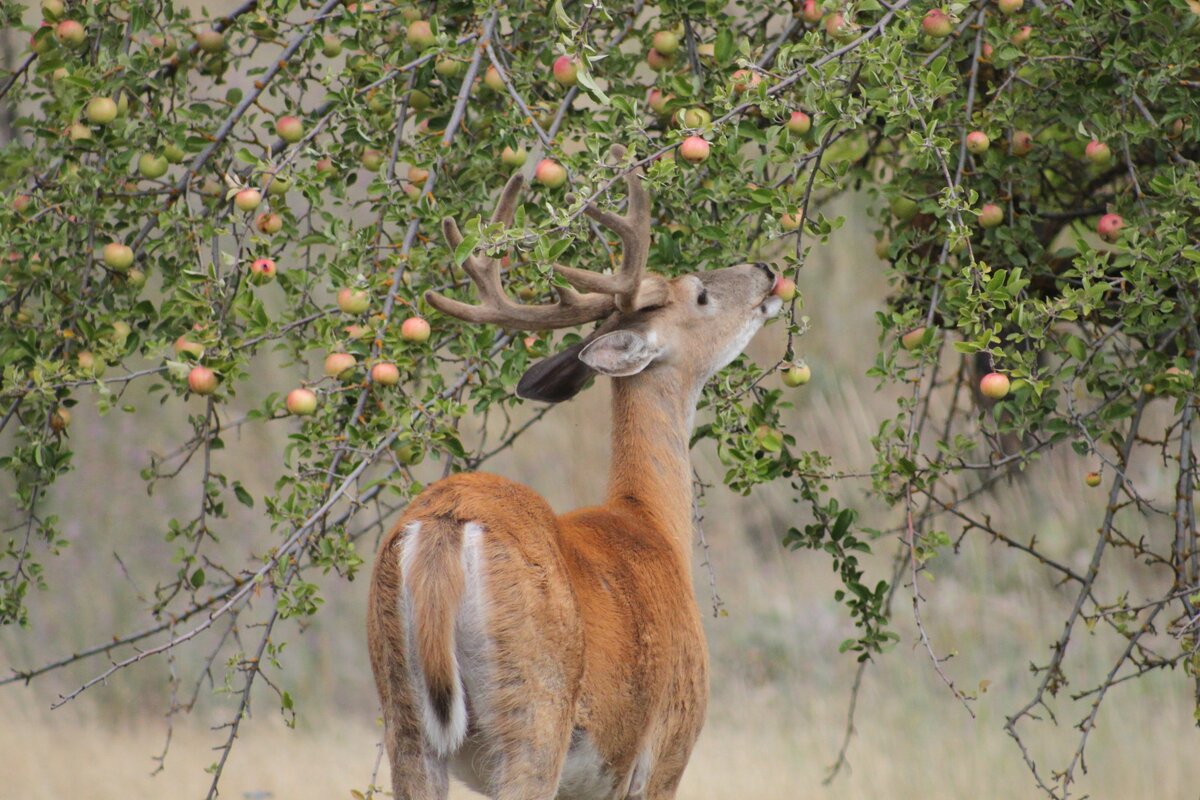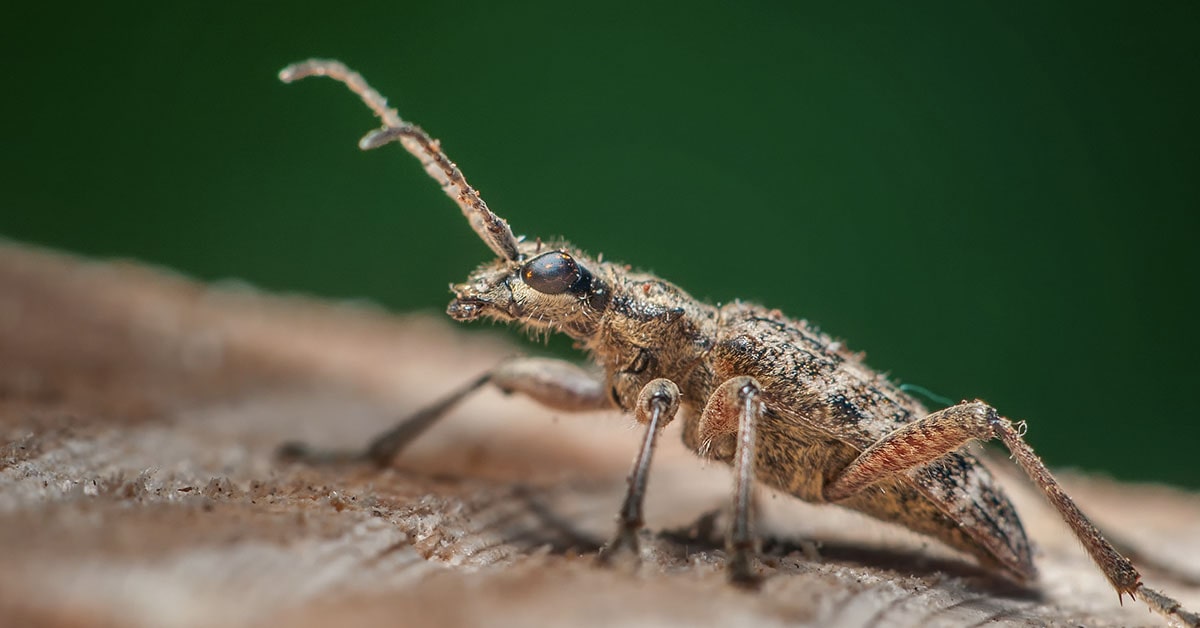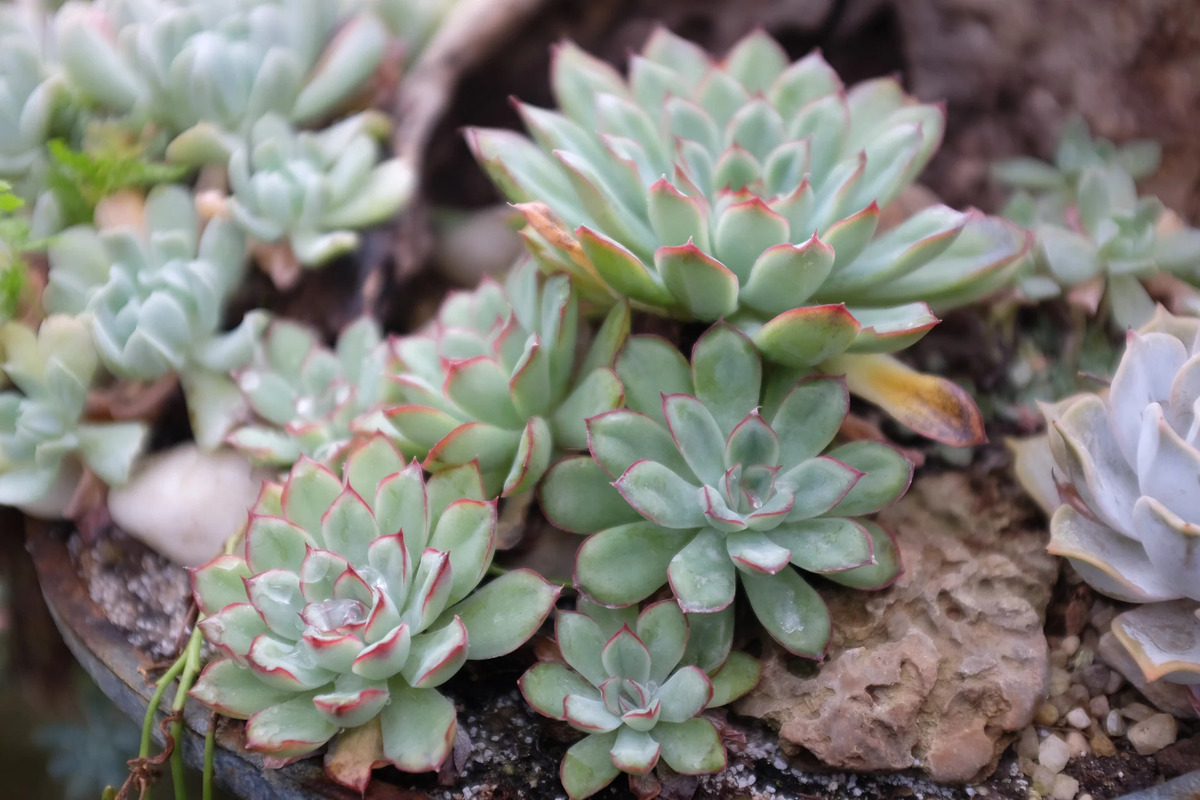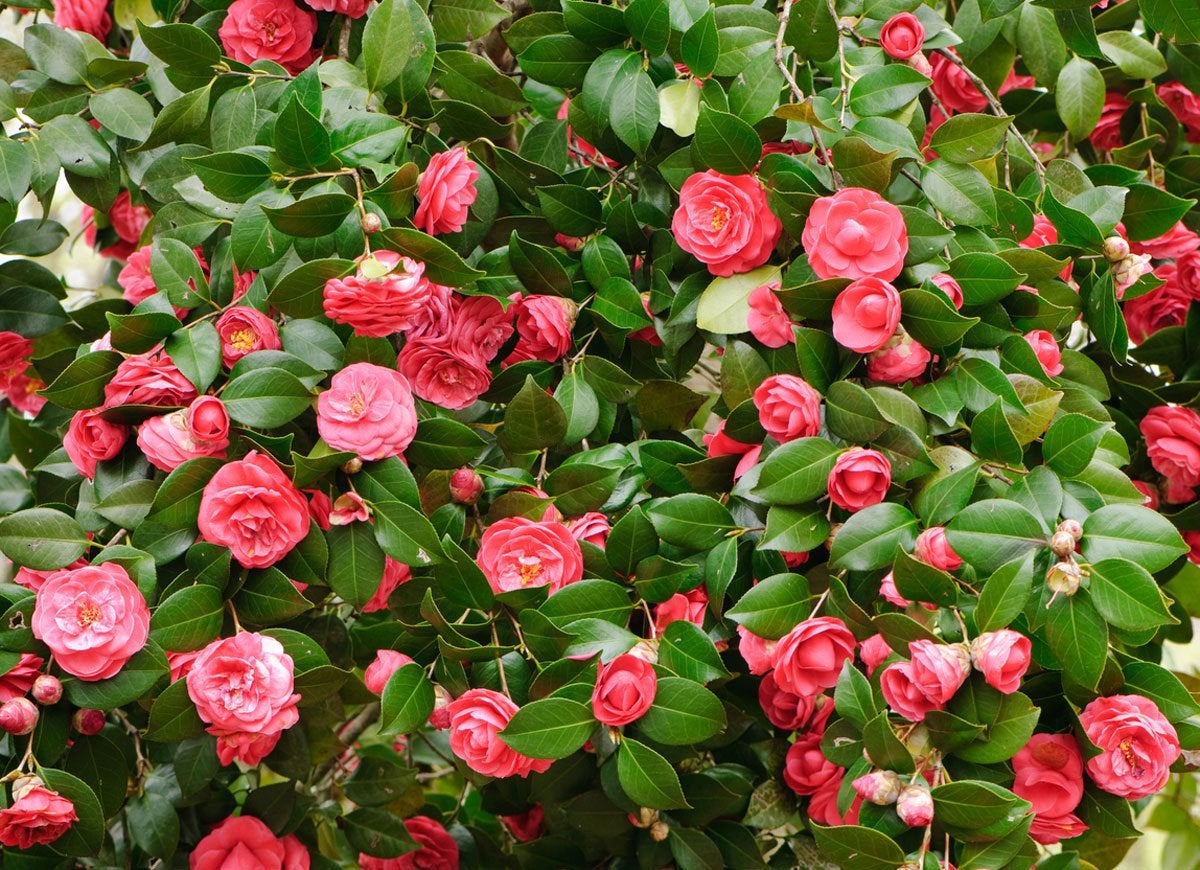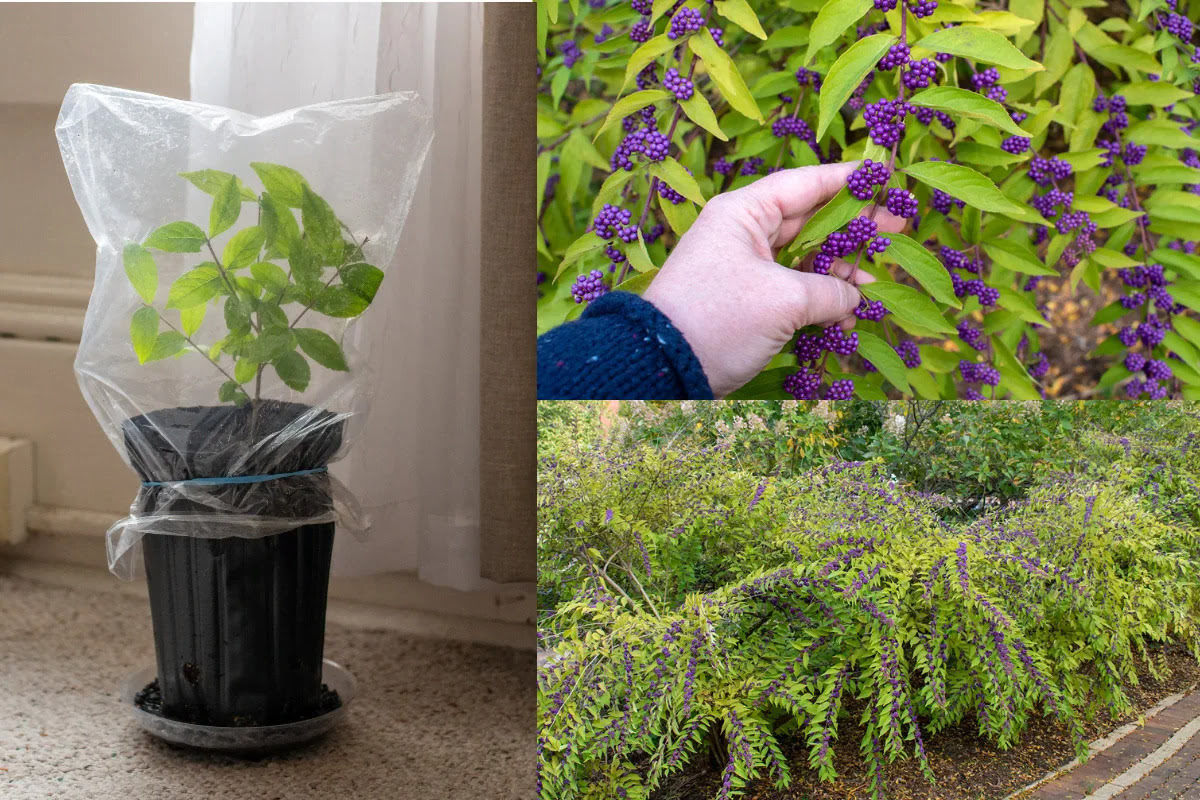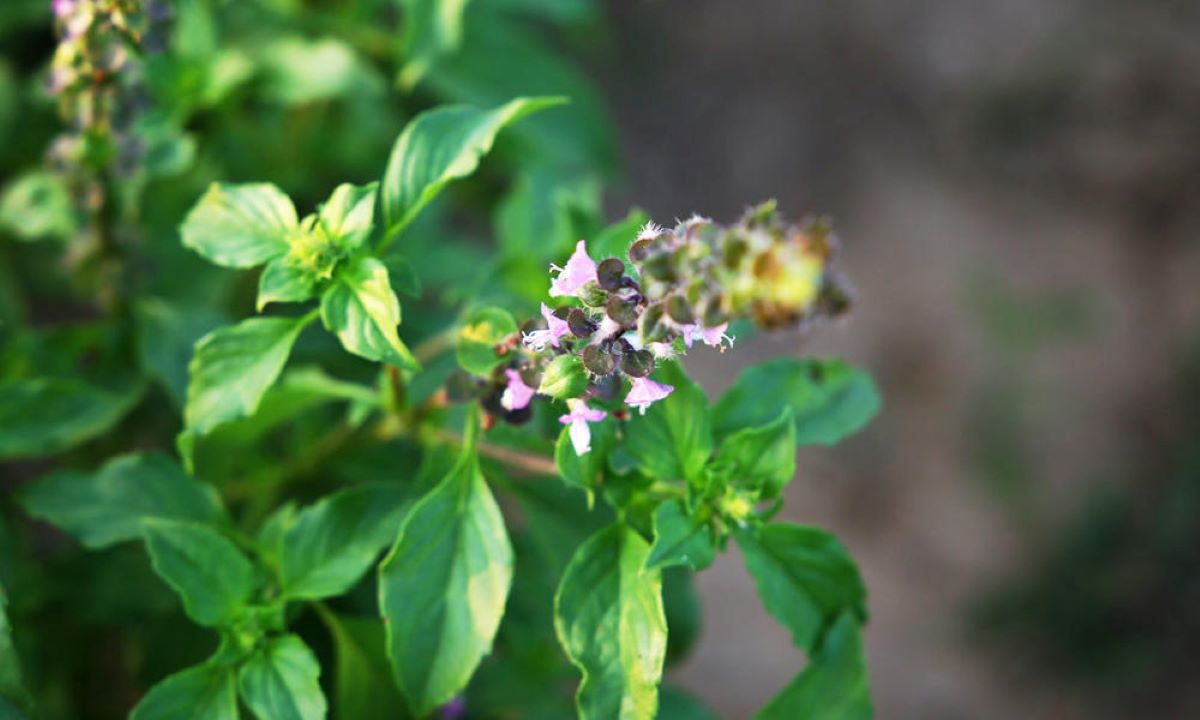Home>Gardening Techniques>Plant Care>How To Protect Shrubs From Rabbits In Winter
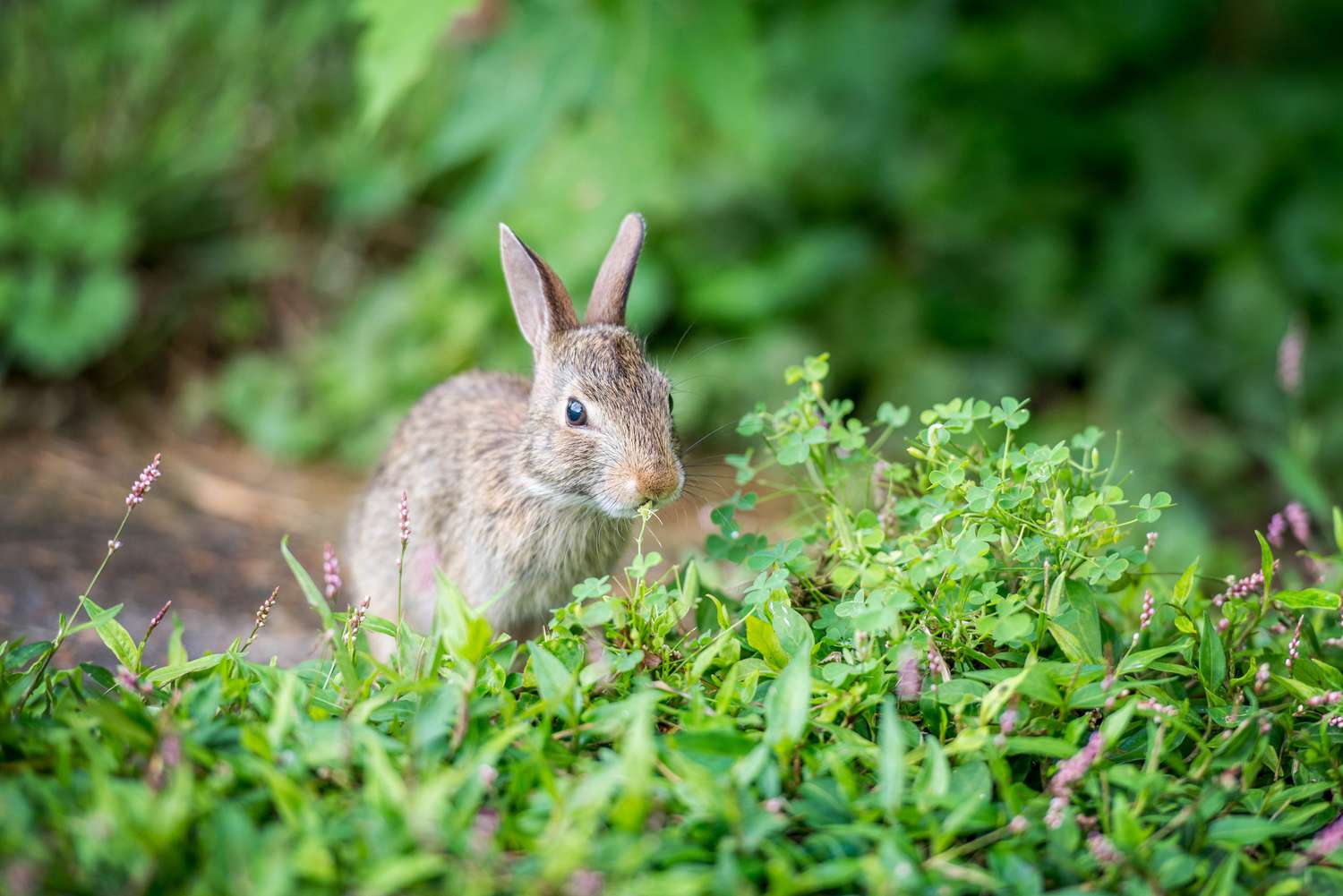

Plant Care
How To Protect Shrubs From Rabbits In Winter
Modified: January 22, 2024
Learn effective plant care techniques to protect your shrubs from rabbits during winter. Keep your plants safe and thriving with our expert tips.
(Many of the links in this article redirect to a specific reviewed product. Your purchase of these products through affiliate links helps to generate commission for Chicagolandgardening.com, at no extra cost. Learn more)
Table of Contents
Introduction
Welcome to our comprehensive guide on how to protect shrubs from rabbits in winter. As plant care enthusiasts, we understand the challenges that rabbits pose to the health and vitality of your cherished shrubs, particularly during the cold winter months. Rabbits are notorious for their voracious appetite and can cause irreversible damage to your plants if left unaddressed.
In this article, we will delve into the world of rabbit pest control and provide you with effective strategies to keep your shrubs safe and thriving throughout the winter season. From natural deterrents and repellents to physical barriers and winter pruning techniques, we will cover a range of proven methods that will help you combat rabbit damage in your garden.
By implementing these measures, you can ensure that your shrubs remain healthy, vibrant, and undisturbed by the furry marauders who might see them as an irresistible snack. Whether you are a seasoned gardener or just starting out, the information and insights shared here will empower you to develop a rabbit-resistant landscape that can withstand the challenges of winter.
But before we jump into the practical solutions, let us first understand the threat that rabbits pose to your shrubs and how to identify vulnerable plants in your garden. By familiarizing ourselves with the enemy and assessing our gardens, we can better tailor our defense mechanisms and protect our plants from potential harm. So, let’s dive in and explore the fascinating world of rabbit control!
Understanding the Threat: Rabbits and Their Impact on Shrubs
Rabbits may look cute and harmless, but their appetite for vegetation can wreak havoc on your shrubs. These small, herbivorous mammals have a notorious reputation for munching on tender plant shoots, leaves, and bark, causing significant damage to your beloved garden. Understanding the impact that rabbits can have on your shrubs is the first step in developing an effective defense strategy.
One of the biggest threats rabbits pose to shrubs is their ability to girdle or strip the bark around the base of the plant. This damage can inhibit the flow of water and nutrients, leading to the eventual decline and death of the shrub. Additionally, rabbits are known to graze on the foliage and stems of shrubs, resulting in an unsightly appearance and stunted growth.
Furthermore, rabbits can cause long-term damage to the root system of shrubs. Their digging and burrowing behavior can disturb the soil around the roots, interfering with the plant’s stability and nutrient absorption. This can weaken the shrub’s overall health and make it more susceptible to diseases and pests.
In colder climates, the impact of rabbits becomes even more pronounced during the winter months. When other sources of food are scarce, rabbits will turn to your shrubs as a primary food source. Their feeding habits can be especially damaging during this time, as they devour the bark and foliage that serve as protective insulators for the plant.
It’s important to note that not all shrubs are equally susceptible to rabbit damage. Some species, such as euonymus, arborvitae, and roses, are particularly appealing to rabbits. These plants have soft, palatable foliage that rabbits find irresistible. By understanding which shrubs are most vulnerable, you can prioritize your protective measures and focus on safeguarding the plants at highest risk.
To identify the impact of rabbits on your shrubs, look for signs such as gnawed bark, clipped foliage, and disturbed soil around the base of the plants. If you notice these telltale signs, it’s crucial to take immediate action to protect your shrubs and prevent further damage.
Now that we have a better understanding of the threat that rabbits pose to shrubs, let’s move on to the next section, where we’ll discuss how to identify vulnerable shrubs in your garden. By recognizing which plants are most at risk, you can tailor your protection efforts and ensure that your beloved shrubs stay safe and healthy.
Identifying Vulnerable Shrubs
Not all shrubs are created equal when it comes to vulnerability to rabbit damage. Some shrubs are more enticing to rabbits due to their foliage, taste, and texture. By identifying vulnerable shrubs in your garden, you can prioritize your efforts and take proactive measures to protect them from rabbit infestation.
Here are some common shrubs that are particularly attractive to rabbits:
- Euonymus: Euonymus shrubs, commonly known as spindle bushes, are highly susceptible to rabbit damage. Their soft and lush foliage is like a buffet for hungry rabbits, making them an easy and tempting target.
- Arborvitae: Arborvitae shrubs have delicate foliage that rabbits find irresistible. These evergreen shrubs are usually tall and narrow, providing an easy access point for rabbits to nibble on their tasty leaves.
- Roses: Roses are not only beloved by gardeners but also by rabbits. The tender petals and young shoots of rose bushes make them a prime target for rabbit feeding. These beautiful flowering shrubs can suffer significant damage if left unprotected.
- Fruit Trees: If you have fruit trees in your garden, particularly young saplings, they can be a magnet for rabbits. The bark and young twigs of fruit trees provide a nutritious and appetizing food source for rabbits, posing a threat to the overall health and productivity of your trees.
- Forsythia: Forsythia shrubs, with their vibrant yellow blossoms, are a welcome sight in the early spring. Unfortunately, they are also a favorite food source for rabbits. These shrubs can be easily damaged by rabbits, resulting in stunted and sparse growth.
It’s important to note that while these shrubs are highly susceptible to rabbit damage, other shrub varieties may also be at risk depending on the local rabbit population and availability of alternative food sources.
To identify vulnerable shrubs in your garden, pay attention to signs of rabbit activity such as nibbled stems, clipped foliage, and gnawed bark. Take note of any shrubs that show these signs of damage, as they are more likely to attract rabbits in the future. By prioritizing the protection of these vulnerable shrubs, you can minimize the potential impact of rabbit infestation on your garden.
Now that we have identified the vulnerable shrubs in your garden, it’s time to explore some effective strategies for deterring rabbits and protecting your beloved plants. In the next section, we’ll discuss natural deterrents and repellents that can help keep rabbits at bay.
Natural Deterrents and Repellents
When it comes to protecting your shrubs from rabbit damage, natural deterrents and repellents can be a highly effective strategy. These methods rely on using scents, tastes, and textures that rabbits find unpleasant, deterring them from approaching your plants. Here are some natural deterrents and repellents that you can try:
- Strong-smelling plants: Rabbits have a sensitive sense of smell, and certain plants produce scents that rabbits find unpleasant. Consider planting aromatic herbs like rosemary, lavender, and sage around your shrubs. The strong smells emitted by these plants can create a natural barrier and discourage rabbits from getting too close.
- Bitter-tasting sprays: There are commercially available sprays that you can apply to your shrubs to make them taste bitter. These sprays typically contain natural ingredients like garlic, pepper, or rotten eggs, which rabbits find unappetizing. Follow the instructions on the product label to ensure safe and effective application.
- Spicy deterrents: Rabbits are sensitive to spicy flavors as well. You can create a homemade deterrent spray using ingredients like chili powder or cayenne pepper mixed with water. Apply the mixture to the shrubs, focusing on the lower parts where rabbits are more likely to chew. Be cautious when using spicy deterrents, as they can also irritate human skin and eyes.
- Physical barriers: Another natural deterrent is to create physical barriers around your shrubs. Install a fence with small openings, about 1 inch in diameter, to prevent rabbits from reaching your plants. The fence should be buried at least 6 inches deep to prevent rabbits from digging underneath. Alternatively, you can use chicken wire or hardware cloth to create a protective barrier around individual shrubs.
- Companion planting: Companion planting involves strategically placing plants next to each other to benefit one another. Some plants have natural compounds that repel rabbits. For example, planting marigolds or onions near vulnerable shrubs can deter rabbits due to their pungent odor.
It’s important to note that natural deterrents and repellents may need to be reapplied periodically, especially after rain or heavy watering, to maintain their effectiveness. Additionally, it’s a good idea to rotate different deterrent methods to prevent rabbits from becoming accustomed to a particular scent or taste.
While natural deterrents can be effective, it’s important to remember that no method is foolproof. Rabbits can be persistent and adaptable, especially when they are hungry and resources are scarce. Therefore, it’s crucial to combine natural deterrents with additional protective measures, which we will explore in the next section.
Now that we have covered natural deterrents and repellents, let’s move on to physical barriers as another effective method for protecting your shrubs from rabbits.
Physical Barriers for Protection
When it comes to protecting your shrubs from rabbit damage, physical barriers provide a reliable and effective solution. By creating a barrier between the rabbits and your plants, you can prevent them from accessing and causing harm to your beloved shrubs. Here are some physical barrier options to consider:
- Fencing: Installing a fence around your shrub area is one of the most effective ways to keep rabbits out. Use chicken wire or hardware cloth with small openings, about 1 inch in diameter, to prevent rabbits from squeezing through. The fence should be at least 2-3 feet high to discourage rabbits from jumping over. Burry the bottom of the fence at least 6 inches deep to prevent rabbits from digging underneath.
- Cylindrical cages: To protect individual shrubs, you can create cylindrical cages using chicken wire or hardware cloth. Measure the height and circumference of your shrub, adding a few extra inches to accommodate growth. Cut the wire accordingly and form it into a cylindrical shape around the shrub, securing the edges together. Bury the bottom of the cage a few inches into the ground to prevent rabbits from burrowing underneath.
- Tree guards: If you have young fruit trees or saplings at risk of rabbit damage, consider using tree guards. These are cylindrical plastic or metal tubes that wrap around the tree trunk, creating a protective barrier. Make sure the tree guards reach a few feet above the snow line to prevent rabbits from climbing over.
- Netting: Another option is to drape netting over your shrubs to act as a physical barrier. Use bird netting or deer netting, ensuring that the mesh is small enough to prevent rabbits from squeezing through. Secure the netting to the ground with stakes to prevent rabbits from lifting it up.
When using physical barriers, it’s important to regularly inspect them for any gaps or damage. Repair or replace any sections that may have been compromised to ensure continued protection.
While physical barriers are highly effective, they may not be practical for large areas or extensive shrub collections. In such cases, combining physical barriers with other deterrents and repellents can provide additional protection.
Now that we have covered physical barriers, let’s move on to discussing winter pruning techniques for your shrubs. Proper pruning can not only enhance the shape and structure of your shrubs but also help deter rabbits.
Winter Pruning Techniques for Shrubs
Winter pruning is an essential practice for maintaining the health and shape of your shrubs. It also serves as a valuable technique to deter rabbits from damaging your plants. By strategically pruning your shrubs, you can help minimize rabbit feeding and promote stronger, healthier growth. Here are some winter pruning techniques to consider:
- Remove low-hanging branches: Start by cutting off any low-hanging branches or sucker growth close to the ground. These lower branches are easier for rabbits to access and can provide a convenient entry point for them to nibble on your shrubs. By removing them, you eliminate a potential food source and make it more challenging for rabbits to reach the tender foliage of your shrubs.
- Thinning out dense growth: Shrubs that have dense growth can provide an attractive hiding place for rabbits. By thinning out the branches, you increase air circulation and visibility within the shrub, making it less appealing for rabbits to take up residence. Use clean and sharp pruning shears to selectively remove crowded or crossing branches, maintaining an open and airy structure.
- Shaping and reducing height: Pruning your shrubs to maintain a desired shape and height can also help deter rabbits. Rabbits prefer shrubs with dense growth and heights that provide them with ample cover. By regularly shaping and reducing the height of your shrubs, you create a less attractive habitat for rabbits and make it harder for them to hide and feed on your plants.
- Pruning to remove damaged or diseased parts: Inspect your shrubs during the winter and remove any dead, damaged, or diseased branches. These weaker sections are more susceptible to rabbit feeding and can serve as an entry point for pests and diseases. Removing them not only improves the overall health of your shrubs but also reduces the appeal for rabbits to target these areas.
When pruning, it’s important to follow best practices to avoid damaging your shrubs. Use clean and sharp pruning tools to make precise cuts, ensuring a clean break that promotes proper healing. Prune just above a bud or node to encourage new growth in the desired direction.
It’s worth noting that while winter pruning can be beneficial in deterring rabbits, it’s not a foolproof method. Persistent rabbits may still attempt to feed on your shrubs, especially if other food sources are scarce. Therefore, it’s essential to combine winter pruning with other protective measures, such as natural deterrents or physical barriers.
Now that we have discussed winter pruning techniques, let’s move on to creating a rabbit-resistant landscape, which involves incorporating plants and design elements that deter rabbits from your garden.
Creating Rabbit-Resistant Landscapes
Creating a rabbit-resistant landscape involves incorporating plants and design elements that naturally deter rabbits from your garden. By strategically selecting the right plants and implementing certain design techniques, you can significantly reduce the likelihood of rabbit damage. Here are some tips to help you create a rabbit-resistant landscape:
- Choose rabbit-resistant plants: Start by selecting shrubs and perennials that rabbits are less likely to eat. Opt for plants with tough or fuzzy leaves, strong fragrances, or plants that rabbits simply find unappetizing. Some examples of rabbit-resistant plants include yarrow, lavender, Russian sage, and potentilla. Incorporating these plants in your landscape can help deter rabbits from venturing into your garden.
- Create physical barriers: As mentioned earlier, physical barriers like fences, netting, or tree guards can be effective in keeping rabbits out. Consider incorporating these barriers, especially around high-risk areas or vulnerable plants. Make sure to secure them properly and regularly check for any damage or gaps that may compromise their effectiveness.
- Utilize raised beds or containers: Growing shrubs in raised beds or containers can provide an extra layer of protection against rabbits. These elevated platforms make it more challenging for rabbits to access the plants and can act as a deterrent. Additionally, raised beds give you more control over the soil quality and drainage, which can contribute to the overall health and vitality of your shrubs.
- Include thorny or prickly plants: Rabbits are generally deterred by plants with thorns or prickly foliage. Incorporate plants such as barberry, holly, or roses, which have thorny stems or sharp leaves. These plants can create an added deterrent for rabbits and protect your shrubs from their grazing.
- Design with hardscaping elements: Another way to deter rabbits is to incorporate hardscaping elements into your landscape design. Features like gravel paths, rocks, or pebble mulch can create physical barriers and make it less appealing for rabbits to traverse your garden. Coupled with other preventive measures, hardscaping can help create a less rabbit-friendly environment.
It’s important to remember that while these strategies can help reduce the risk of rabbit damage, they may not guarantee complete protection. Rabbits are adaptable creatures, and their behavior can vary based on factors like local food availability and population. Therefore, it’s always a good idea to employ a combination of methods and regularly reassess and modify your strategies as needed.
Now that we have explored ways to create a rabbit-resistant landscape, let’s move on to the next section, where we will discuss monitoring and maintenance tips to ensure the ongoing protection of your shrubs.
Monitoring and Maintenance Tips
Monitoring and regular maintenance are essential to ensure the ongoing protection of your shrubs from rabbit damage. By staying attentive and proactive, you can quickly identify any signs of rabbit activity and implement necessary measures to safeguard your plants. Here are some monitoring and maintenance tips to keep in mind:
- Regularly inspect your shrubs: Take the time to regularly inspect your shrubs for any signs of rabbit damage. Look for clipped foliage, gnawed bark, or disturbed soil around the base of the plants. Early detection is key to addressing the issue promptly and preventing further damage.
- Reapply natural deterrents and repellents: Natural deterrents and repellents may need to be reapplied periodically, especially after rainfall or heavy watering. Rain can wash away the scents or tastes that deter rabbits. Follow the instructions provided by the manufacturer to ensure proper application and effectiveness.
- Maintain physical barriers: Keep a close eye on any physical barriers you have in place, such as fences, netting, or tree guards. Regularly check for any damage, gaps, or signs of wear and tear. Repair or replace these barriers as needed to ensure rabbits cannot penetrate your protective perimeter.
- Prune regularly: Continuously maintain your shrubs by regular pruning to remove any damaged, diseased, or overgrown branches. Not only does this promote the health and shape of your shrubs, but it also eliminates potential entry points and food sources for rabbits.
- Keep the garden tidy: Maintain a neat and tidy garden by removing fallen leaves, twigs, and other debris. These can provide hiding places for rabbits and increase the appeal of your garden as a feeding ground. Regularly clean up and dispose of any debris to minimize the risk of attracting rabbits.
- Consider motion-activated devices: Motion-activated devices, such as sprinklers or ultrasonic repellents, can startle and deter rabbits from entering your garden. These devices use sound, water, or a combination of both to discourage rabbits from approaching your plants. Use them strategically in areas of high rabbit activity for the best results.
By incorporating these monitoring and maintenance tips into your routine, you can proactively protect your shrubs from rabbit damage and maintain a thriving garden throughout the year.
Now that we have covered monitoring and maintenance tips, let’s conclude our article with a summary of the key insights and strategies discussed.
Conclusion
In conclusion, protecting your shrubs from rabbit damage requires a combination of strategies and consistent effort. By understanding the threats rabbits pose to your shrubs, identifying vulnerable plants, and implementing effective measures, you can ensure the health and beauty of your garden throughout the winter months.
We explored various strategies, starting with natural deterrents and repellents that utilize scents and tastes rabbits find unpleasant. These methods can be enhanced by incorporating physical barriers such as fences, netting, or tree guards to create a more robust defense against rabbit intrusion.
In addition, winter pruning techniques can help deter rabbits by removing low-hanging branches, thinning out dense growth, and shaping your shrubs. This not only improves their appearance but also makes them less appealing to rabbits.
To create a truly rabbit-resistant landscape, it’s important to carefully select rabbit-resistant plants and incorporate hardscaping elements that discourage rabbit activity. Regular monitoring and maintenance, including reapplying deterrents, inspecting physical barriers, and keeping a tidy garden, play a crucial role in ensuring ongoing protection for your shrubs.
Remember, while these strategies can greatly reduce the risk of rabbit damage, no method provides absolute protection. Persiste


